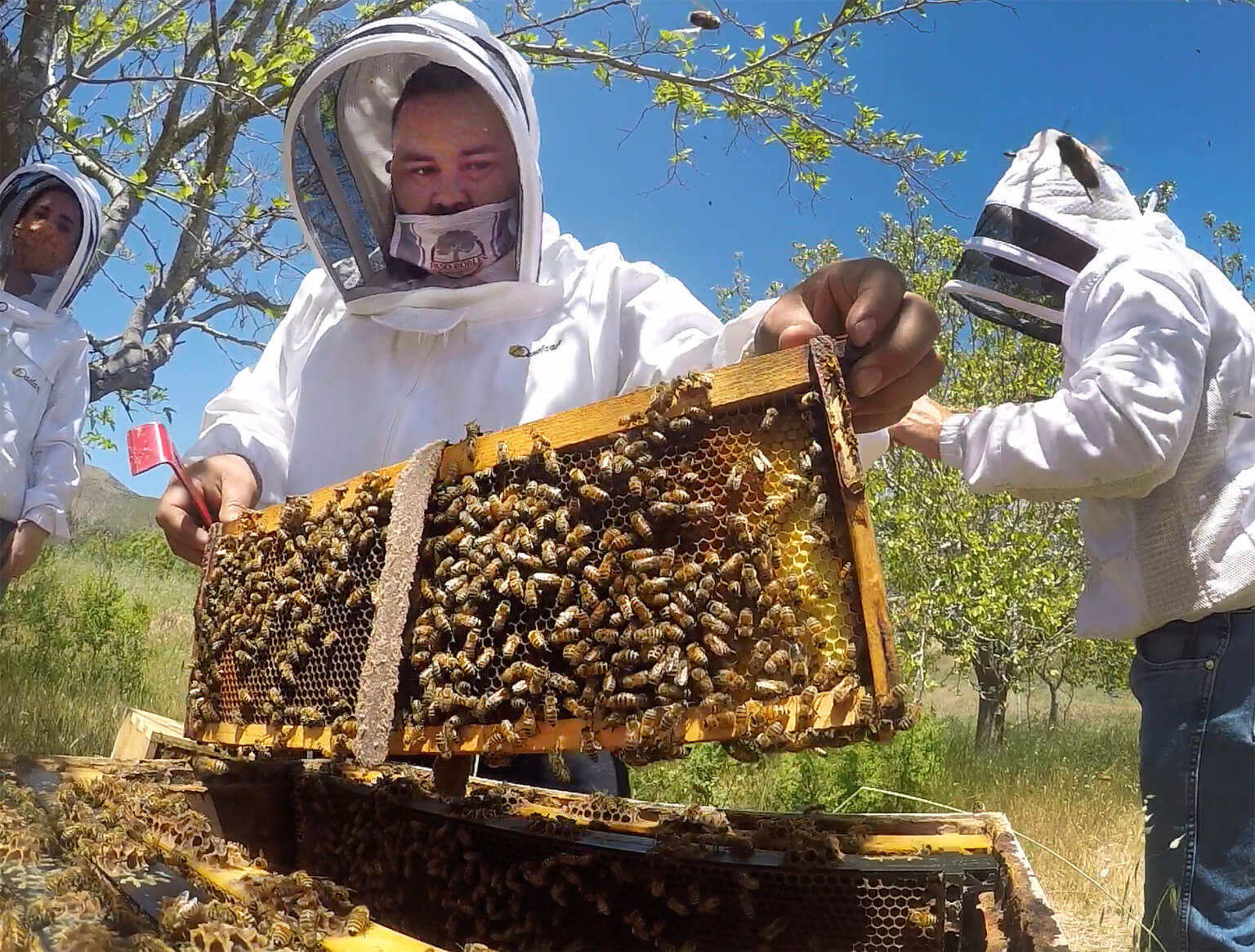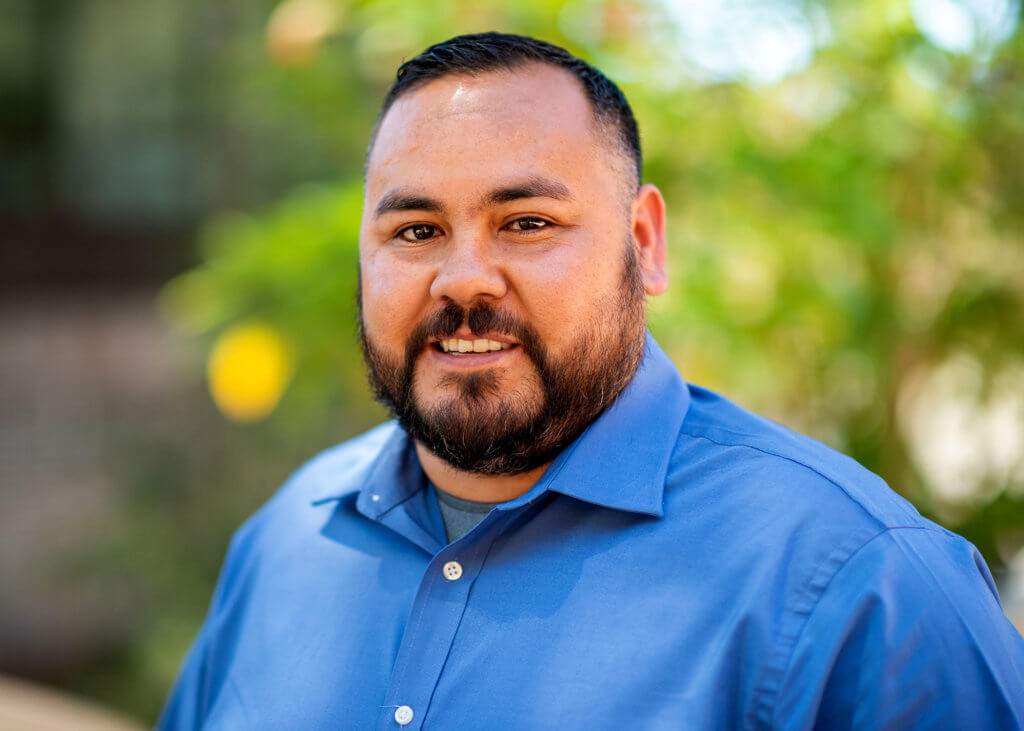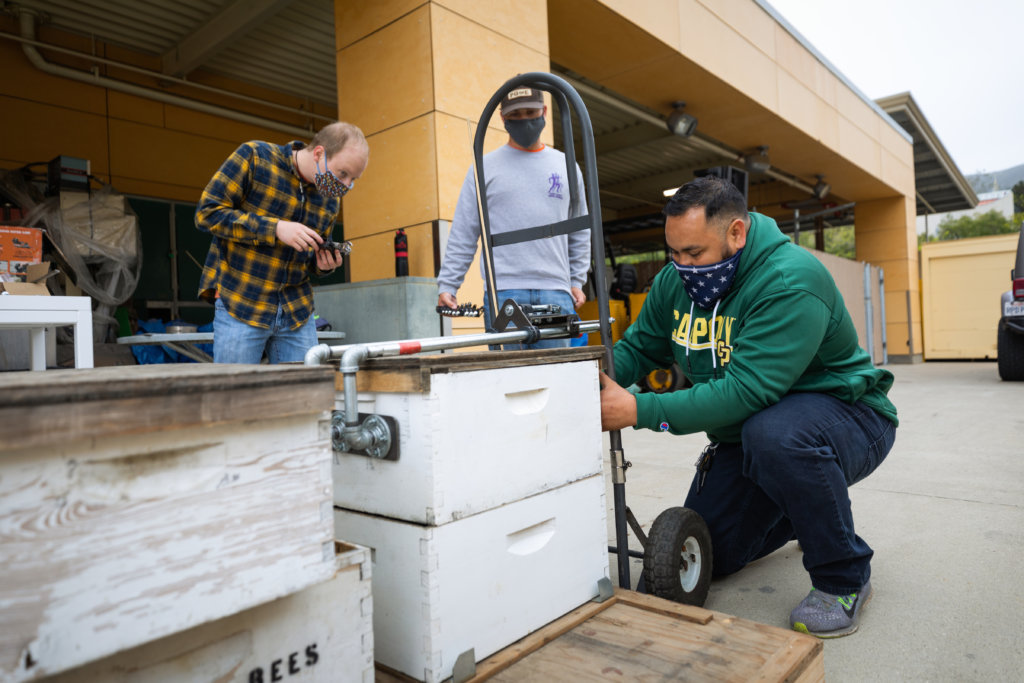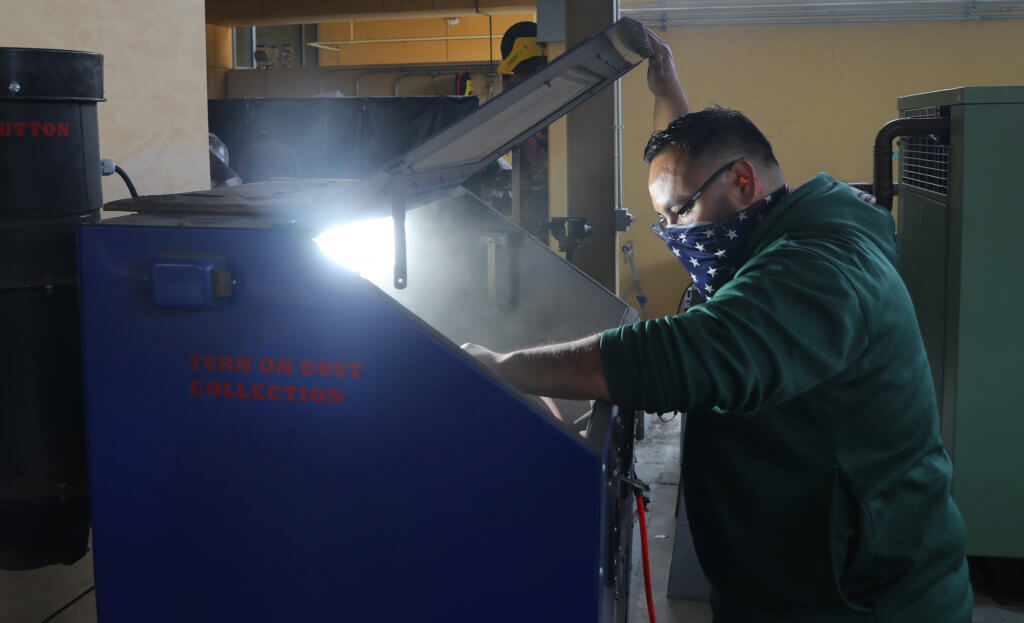Wearing a white beekeeper jacketwith a fencing veil, Javier Guerra inspects a beehive frame, noting the small number of eggs the queen has produced.
“That means the queen’s not doing its job,” he says, as dozens of bees scurry around the frame. “That’s why they get rid of the queen and put a new one in there.”
Guerra, a mechanical engineering student who graduated last June, decided to take the elective beekeeping course mostly because his senior project seeks to help a wounded veteran, Alejandro Jauregui, who makes his living as a beekeeper. But, as a war veteran himself, Guerra also wanted to experience the therapeutic effect bees offer Jauregui.
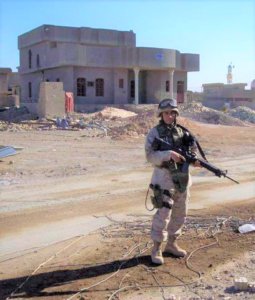
“When I’m in the beekeeping class, it’s kind of relaxing,” Guerra said. “The buzzing … it’s, like, a soothing sound.”
While buzzing bees offer Jauregui that needed soothing — and a source of income — tending to 1,200 beehives can be taxing on his body.
“When somebody is lifting something heavy, you use your legs a lot,” he said. “I can’t do that.”
During the last of his four combat tours in Iraq and Afghanistan in 2012, Jauregui stepped on an IED.
“It was supposed to be a simple mission — blow up an IED and come back,” said the 11-year Army vet from Woodland, California.
Jauregui had felt the disorienting impact of previous explosions. But this time, he was injured the worst.
“I definitely knew it was me,” he said. “I was awake for the whole thing.”
After a buddy dragged him out of the hole the explosion created, Jauregui was quickly tended to, missing parts of both legs and two fingertips on his right hand. After a long recovery, the nonprofit Farmer Veteran Coalition hooked him up with a career as a beekeeper back home.
His business, Fury Bees, provides pollination for almond crops and produces 200 gallons of honey a year. But when the beehives fill with honey, the boxes he lifts for inspection can weigh up to 80 pounds — and he often has to lift dozens of boxes a day. Meanwhile, with two prosthetic legs that don’t bend like human legs, he relies more on his back to lift.
“He was finding that he would get lower back pain just from repeatedly having to bend over,” said Kyle Ladtkow, a member of Guerra’s senior project team with Ryan Heryford and Jose Velazquez.
A friend who works for another veterans nonprofit connected Jauregui to Cal Poly, where his challenge was selected as a senior project in the Mechanical Engineering Department. Ladtkow jumped at the opportunity to help someone with engineering. Guerra had more specific reasons.

“When it came to the selection of this senior project, the thing that attracted me the most was the fact that he was a veteran — because we have that common ground, and I’m all about helping our fellow veterans,” he said.
Born in Mexico, just like Jauregui, Guerra served 12 years as a Marine, including tours in Iraq and Japan. After leaving the military in 2015, he decided to study engineering at Cal Poly.
“Growing up, I just loved to take things apart,” he said. “I would always take things apart and see how they worked — how the gears moved and everything.”
In high school, he received a full-ride scholarship to New Mexico State University in Las Cruces, but he wanted to leave his hometown, so Guerra, one of 11 children, enlisted in the military.
“And it’s the best thing that ever happened to me,” he said.
Likewise, Jauregui has no regrets about his service. But his body will never let him forget the explosion that changed his life.
“I get a lot of hip pain because of the way I walk,” he said.
Seeking to alleviate some of that pain, the Cal Poly team, Beekeeper Assist, began researching what products were out there for beekeepers while communicating with Jauregui regularly via Zoom.
“Talking to him was probably the biggest and most helpful resource because, you know, he is the expert on the problem,” Ladtkow said.
Eventually, the team decided to modify a dolly from Home Depot, which will include an arm that can drop on top of a bee box and clamp onto it. Employing the dolly to lift the boxes could take significant stress off Jauregui’s body.
The challenge, Jaurequi said, will be the time it takes to use it. If the dolly can allow him to spare his back without adding time to his work, it will be a success.
“I’m very excited about it,” he said. “The project overall is doing what I asked for.”

For the Beekeeper Assist team, that’s what matters.
“I’ve always believed you should strive to help others, no matter what you do,” said Guerra, who this fall started working at Phillips 66 as a fixed equipment reliability engineer. “My parents brought me up that way.”
His parents have both passed away. But, as a parent himself, Guerra has inspired his oldest child, a 17-year-old daughter, who is also interested in engineering and math.
“I’m the first one in my family out of 11 that is going to school, so we’re thinking about trying to see if she makes it to Cal Poly so she can start a family tradition,” Guerra said.
However, the high school junior might be undecided on beekeeping.
“She said that taking beekeeping was an interesting choice since I have a mild allergic reaction to bee stings,” Guerra said.
Photo by Joe Johnston/University Photographer/Cal Poly 4-13-21

